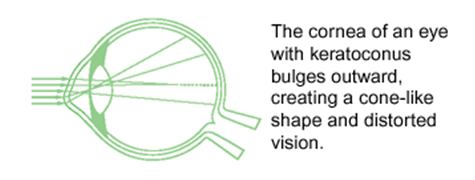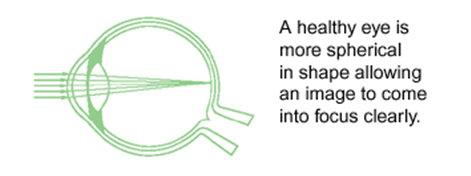Keratoconus
A Closer Look at Keratoconus
Keratoconus is a disease that causes a progressive thinning of the cornea, the clear front portion of the eye. As a result of this condition, the normal outward pressure from within the eye causes the cornea to progressively bulge into a cone-like shape. Keratoconus rarely results in total blindness although it can significantly impair vision and, according to experts, lead to the need for a corneal transplant in up to 20% of cases.

While nobody knows the cause of keratoconus, there is evidence that the disease has genetic origins, possibly made worse by environmental factors. It normally affects both eyes, though it typically progresses at different rates. In most people, keratoconus begins during their teen years and slowly worsens before stabilizing in their 30s or 40s.

Keratoconus is estimated to affect one in 2,000 people across all races. It is normally treated with rigid contact lenses which are contoured to address the bulging cornea and to improve vision. A proper contact lens fit is crucial to obtain adequate vision and wearing comfort. Poorly fit or outdated contact lenses can be uncomfortable and lead to additional complications like corneal abrasions, scarring or infection.
Treatment
In mild cases, glasses and soft contacts can be effective, but in more advanced cases, these no longer work well.
Benefits of Intacs for Keratoconus
- S afe, removable, replaceable
- R educes myopia and astigmatism associated with keratoconus
- R estores the cornea to a more natural dome shape
- M inimally invasive surgical procedure
- R ecovery period is days, compared to months for a corneal transplant
- I mproves quality of life
- May delay need for corneal transplant



